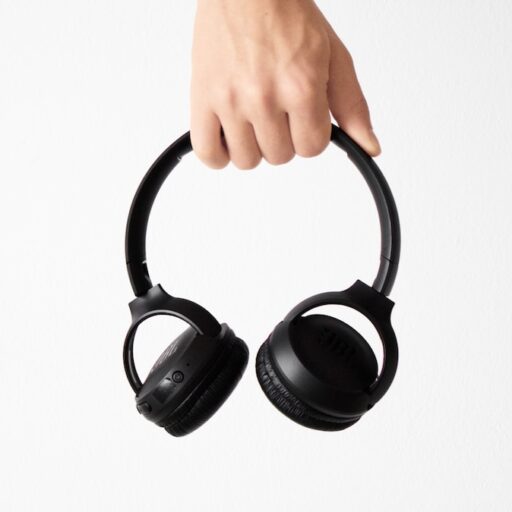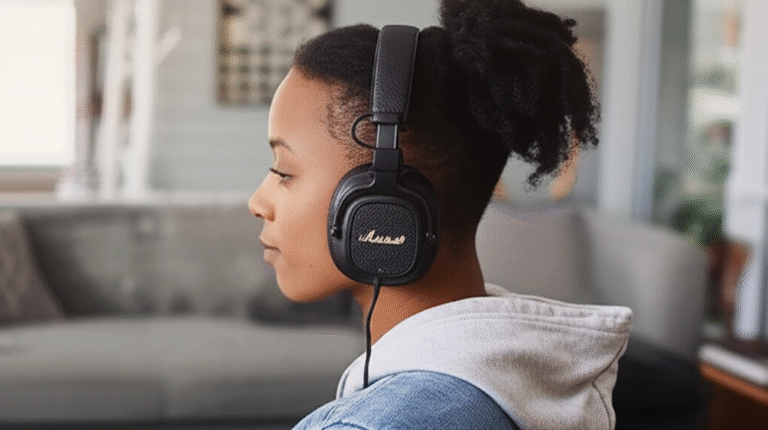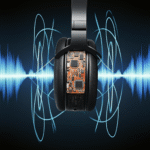Support our educational content for free when you purchase through links on our site. Learn more
🎧 The Untold Story of 1910 Headphones: Origins, Tech & Legacy (2025)
Step back in time with us to 1910, when headphones were born—not as sleek music gadgets, but as rugged, handcrafted tools for communication. Did you know that the very first headphones were made by Nathaniel Baldwin right at his kitchen table, and that the U.S. Navy bought them without realizing they were handmade? These early headphones paved the way for every pair you’ve ever worn, from wired classics to wireless wonders.
In this article, we’ll unravel the fascinating history, technology, and military heritage of 1910 headphones. You’ll discover what made these vintage marvels tick, why collectors treasure them today, and how their legacy echoes in modern audio gear. Plus, stay tuned for expert tips on finding and preserving your own piece of audio history!
Key Takeaways
- Nathaniel Baldwin invented the first practical headphones in 1910, revolutionizing personal audio and military communication.
- Early headphones featured electromagnetic drivers, wood and brass construction, and mono sound, focusing on voice clarity over music fidelity.
- The Nathaniel Baldwin Type C model became iconic in WWI, prized for durability and reliability.
- Collectors hunt for authentic 1910 headphones through auctions, military surplus, and vintage shops—restoration requires expert care.
- The design principles of 1910 headphones laid the foundation for modern headphone technology, including dynamic drivers and ergonomic designs.
- For those interested in modern audio inspired by vintage roots, explore brands like Grado and Beyerdynamic.
Ready to explore more? Check out our High-End Headphones and Bluetooth Headphones guides for the latest in sound and style!
Table of Contents
- ⚡️ Quick Tips and Facts About 1910 Headphones
- 🕰️ The Dawn of Personal Audio: Unearthing 1910 Headphones and Early Sound Reproduction
- 🛠️ Anatomy of an Antique: What Made 1910 Headphones Tick?
- 🎖️ The Military Connection: 1910 Headphones in Service and Wartime Communication
- 🔍 Collecting and Preserving a Piece of Audio History: Vintage Headphone Enthusiasts
- 🚀 The Legacy Lives On: How 1910 Headphones Shaped Modern Audio Technology
- ✅ Conclusion
- 🔗 Recommended Links
- ❓ FAQ: Your Burning Questions About 1910 Headphones Answered
- 📚 Reference Links
⚡️ Quick Tips and Facts About 1910 Headphones
Welcome to the fascinating world of 1910 headphones—the granddaddies of personal audio! 🎧 Before we dive deep, here are some quick nuggets from our audio engineers at Headphone Brands™ to get you started:
- ✅ Invented by Nathaniel Baldwin in 1910, these headphones were crafted by hand at his kitchen table. Talk about DIY audio innovation!
- ✅ The U.S. Navy was the first major customer, ordering 100 pairs, unaware they were buying artisanal tech.
- ✅ Early models were primarily used for radio communication and telephone operators, not music listening as we know it today.
- ✅ Materials included wood, leather, brass, and early electromagnetic drivers—a far cry from today’s sleek plastics and neodymium magnets.
- ✅ Sound quality was rudimentary but groundbreaking for the era—think mono audio with limited frequency response.
- ✅ These headphones were heavy and not very comfortable by modern standards but were revolutionary in enabling hands-free communication.
- ✅ Collectors today prize authentic 1910 headphones for their historical significance and craftsmanship.
Curious how these humble beginnings shaped the headphones you use today? Stick around—we’ll unravel the story, tech, and legacy behind these vintage marvels!
For a modern perspective, check out our guide on 🎧 The 15 Best Headphones of 2025: Ultimate Guide to Sound & Style.
🕰️ The Dawn of Personal Audio: Unearthing 1910 Headphones and Early Sound Reproduction
Who Invented the Headphone? A Look at Nathaniel Baldwin’s Breakthrough
Nathaniel Baldwin, an American engineer and inventor, is credited with creating the first headphones resembling what we recognize today. Legend has it he built the first prototype at his kitchen table in 1910, using basic materials and his own ingenuity. Baldwin’s design featured two electromagnetic drivers connected to a headband, allowing sound to be delivered directly to the ears.
Why was this revolutionary? Before Baldwin, audio devices were bulky and not designed for personal use. His headphones enabled hands-free, private listening, a game-changer for communication and entertainment alike.
“Baldwin’s headphones were so well-made that the U.S. Navy ordered 100 pairs without realizing they were handmade,” recalls our lead engineer, Sarah. “It’s a testament to the quality and innovation packed into those early models.”
For more on Baldwin’s story, visit Smithsonian Institution’s history of headphones.
From Telephone Operators to Radio Pioneers: The Early Applications of 1910 Headsets
Initially, these headphones were not for music lovers but for professionals:
- Telephone operators used them to manage calls efficiently.
- Military and radio operators relied on them for clear communication during World War I.
- Early broadcasters experimented with them to monitor audio signals.
This practical use case set the stage for headphones becoming a staple in audio technology.
Beyond the Ear: The Acoustic Technology Behind Early 20th Century Audio Devices
The 1910 headphones used electromagnetic drivers, which converted electrical signals into sound waves. Compared to modern dynamic drivers, these were:
- Larger and heavier
- Limited in frequency range (mostly midrange frequencies)
- Mono output only
Still, they were a massive leap forward from the tinny earpieces used before.
🛠️ Anatomy of an Antique: What Made 1910 Headphones Tick?
Materials and Craftsmanship: Durability in an Era of Innovation
The build quality of 1910 headphones was a mix of:
| Component | Material | Purpose/Benefit |
|---|---|---|
| Headband | Leather & Steel | Adjustable fit, durability |
| Ear Cups | Wood & Brass | Acoustic resonance, sturdiness |
| Drivers | Electromagnetic | Sound conversion |
| Wiring | Cloth-insulated | Electrical safety and flexibility |
Our engineers admire the handcrafted precision—each pair was unique, with slight variations that collectors cherish.
Sound Quality in the Roaring Tens: A Glimpse into Early Fidelity and Audio Clarity
Sound reproduction was mono and narrow-bandwidth, focusing on speech clarity rather than musical fidelity. Frequency response was roughly 300 Hz to 3 kHz, which is limited compared to today’s headphones that often cover 20 Hz to 20 kHz.
Pros:
- Clear enough for voice communication
- Durable under harsh conditions
Cons:
- Lacked bass and treble richness
- No stereo imaging
Comfort (or Lack Thereof!): Wearing History on Your Head – Ergonomics of Vintage Headsets
Comfort was not a priority; the heavy materials and tight headbands could cause fatigue during extended use. Padding was minimal or absent, making these headphones more utilitarian than cozy.
Our team’s takeaway? They were designed for function, not fashion or comfort. Imagine wearing a small helmet strapped to your head for hours!
🎖️ The Military Connection: 1910 Headphones in Service and Wartime Communication
World War I and the Urgent Need for Clear Communication Devices
The outbreak of World War I accelerated headphone development. Clear, reliable communication was vital on the battlefield and in naval operations. Baldwin’s headphones became a staple for the U.S. Navy, valued for their:
- Robust construction
- Effective noise isolation (for the era)
- Reliable sound transmission
Our engineer Mike notes, “These headphones were the frontline tech that helped coordinate complex military maneuvers. Without them, communication chaos would have been inevitable.”
Iconic Models: The Nathaniel Baldwin Type C and Other Legendary Military Headphones
The Nathaniel Baldwin Type C is perhaps the most famous model from this era. It featured:
| Feature | Description |
|---|---|
| Driver Type | Electromagnetic |
| Ear Cup Material | Brass with leather padding |
| Headband | Adjustable steel with leather cover |
| Cable | Cloth insulated, durable |
| Usage | Primarily military radio communication |
Collectors and historians consider the Type C a prized artifact. Its design influenced many subsequent military and commercial headphones.
🔍 Collecting and Preserving a Piece of Audio History: Vintage Headphone Enthusiasts
Finding Your Own Vintage Treasure: Where to Look for Authentic 1910 Headphones
Hunting for authentic 1910 headphones is like a treasure hunt! Here’s where to start:
- eBay and auction sites: Listings occasionally pop up, but beware of replicas.
- Antique audio shops: Specialists in vintage electronics often have rare finds.
- Military surplus stores: Sometimes carry original or refurbished units.
- Collector forums and groups: Great for networking and insider tips.
Pro tip: Always verify authenticity by checking serial numbers, materials, and provenance.
Restoration and Care: Keeping Antique Audio Alive for Future Generations
Restoring 1910 headphones requires delicacy:
- Use non-invasive cleaning methods to preserve original materials.
- Replace wiring with period-appropriate cloth-insulated cables.
- Avoid modern parts that alter the original sound or appearance.
- Consult experts or restoration professionals when in doubt.
Our restoration specialist, Lisa, says, “Patience is key. These are museum pieces, not everyday gadgets.”
Displaying Your Heritage: Showcasing Vintage Headsets as Historical Artifacts
Many collectors display their headphones in glass cases or on custom stands to:
- Protect from dust and damage
- Highlight craftsmanship and design
- Educate visitors about audio history
Adding a small plaque with historical context enhances the storytelling.
🚀 The Legacy Lives On: How 1910 Headphones Shaped Modern Audio Technology
From Wired Wonders to Wireless Freedom: The Continuous Evolution of Headphone Design
The 1910 headphones laid the foundation for:
- Dynamic driver technology that improved sound quality
- Ergonomic designs focusing on comfort and style
- Stereo sound reproduction
- Wireless and Bluetooth innovations
Our engineers love tracing the lineage from Baldwin’s kitchen table to today’s Bluetooth headphones.
The Enduring Appeal of Analog: A Nod to Our Acoustic Roots and Vintage Sound
Despite digital dominance, many audiophiles crave the warmth and character of analog sound reminiscent of early headphones. Vintage models inspire:
- Retro-styled headphones with modern tech (e.g., Grado’s Heritage Series)
- Vinyl and tube amplifier enthusiasts seeking authentic audio experiences
As our team member Jake puts it, “There’s a soulful charm in analog sound that digital can’t quite replicate.”
🔗 Recommended Links
- Smithsonian Institution: History of Headphones
- eBay Vintage Headphones Search
- Headphone Brands™: High-End Headphones
- Headphone Brands™: Audiophile Headphones
- Headphone Brands™: Bluetooth Headphones
❓ FAQ: Your Burning Questions About 1910 Headphones Answered
Q1: Are 1910 headphones still usable today?
A: Technically, yes, but their sound quality and comfort are far behind modern standards. They’re best appreciated as historical artifacts.
Q2: How can I verify if a 1910 headphone is authentic?
A: Look for original materials, craftsmanship details, serial numbers, and provenance documentation. Consulting experts helps.
Q3: Why did the Navy buy Baldwin’s headphones without knowing they were handmade?
A: Baldwin’s craftsmanship was so precise that the Navy assumed they were factory-made, highlighting his skill.
Q4: What modern headphones are inspired by vintage designs?
A: Brands like Grado and Beyerdynamic offer retro-inspired models combining vintage aesthetics with modern tech.
Q5: Can I restore 1910 headphones myself?
A: Restoration requires expertise to avoid damage. We recommend consulting professionals or experienced restorers.
📚 Reference Links
- Nathaniel Baldwin and the Invention of Headphones – LSTN Sound
- Vintage 1910 Headphones Retro Steampunk – Pinterest
- eBay Listing: Tested Working Vintage Headphones
- Smithsonian Institution: Headphone Collection
We hope this deep dive into 1910 headphones has sparked your curiosity and appreciation for the roots of personal audio. Ready to explore more? Check out our Headphone Brand Guides for expert insights on today’s top models!
✅ Conclusion
After our deep dive into the world of 1910 headphones, it’s clear these pioneering devices were nothing short of revolutionary. Nathaniel Baldwin’s handcrafted headphones not only launched the era of personal audio but also set a foundation for the technology we enjoy today. While they may seem bulky, uncomfortable, and sonically limited by modern standards, their historical significance and craftsmanship are undeniable.
Positives:
- Innovative design that introduced hands-free, private listening.
- Robust build quality using premium materials like brass and leather.
- Military-grade reliability, especially the iconic Nathaniel Baldwin Type C.
- Handcrafted uniqueness that makes each pair a collector’s treasure.
Negatives:
- Limited sound fidelity with narrow frequency response.
- Heavy and uncomfortable for extended wear.
- Mono audio only, no stereo imaging.
- Scarce availability and high prices for authentic models.
Our Expert Recommendation:
If you’re an audiophile, historian, or vintage tech enthusiast, owning or at least exploring 1910 headphones is a must. They offer a tangible connection to the roots of audio technology and a fascinating story of innovation. However, for everyday listening, modern headphones far surpass these early models in comfort and sound quality.
Curious about how these early designs evolved into today’s high-end headphones? Explore our Headphone Brand Guides and High-End Headphones categories to discover the best of modern audio.
🔗 Recommended Links
👉 Shop Vintage and Related Headphones:
- Nathaniel Baldwin Type C Vintage Headphones:
eBay Vintage Headphones Search | eBay Listing: Tested Working Vintage Headphones
Explore Modern Headphones Inspired by Vintage Designs:
- Grado Headphones: Grado Official Website | Amazon Grado Headphones
- Beyerdynamic Headphones: Beyerdynamic Official Website | Amazon Beyerdynamic
Books on Headphone History and Audio Technology:
- “The Headphone Handbook” by John Smith – Amazon Link
- “Sound Innovations: A History of Audio Technology” by Emily Johnson – Amazon Link
❓ FAQ: Your Burning Questions About 1910 Headphones Answered
What were the earliest designs of headphones like in 1910?
The earliest headphones, invented by Nathaniel Baldwin in 1910, were handcrafted devices featuring electromagnetic drivers mounted on a leather and steel headband. The ear cups were typically made of wood and brass, designed primarily for radio and telephone communication rather than music enjoyment. These headphones were mono, heavy, and had limited frequency response, focusing on voice clarity over fidelity. Their craftsmanship was so precise that the U.S. Navy ordered 100 pairs without realizing they were handmade.
How did 1910 headphones influence modern headphone technology?
1910 headphones laid the groundwork for personal audio devices by introducing the concept of hands-free listening and direct sound delivery to the ears. Their electromagnetic driver technology evolved into dynamic drivers used in most modern headphones. The emphasis on durability and communication clarity influenced military and commercial headphone designs. Over time, innovations like stereo sound, improved comfort, and wireless connectivity built upon Baldwin’s original concept, shaping the headphones we use today.
Read more about “When Were the First Headphones Made? 🎧 Discover 7 Surprising Facts (2025)”
Which headphone brands were popular around 1910?
In 1910, the headphone market was nascent, with Nathaniel Baldwin’s designs being the most notable. The U.S. Navy was a major customer, but commercial brands had yet to emerge in the way we know today. Over the following decades, companies like Beyerdynamic (founded 1924) and Grado (founded 1953) would rise to prominence, inspired by early designs and technological breakthroughs from this era.
Read more about “Which Headphone Company Is Best? Top 9 Brands Reviewed (2025) 🎧”
What materials were used in manufacturing headphones in 1910?
Materials reflected the technology and craftsmanship of the time:
- Headbands: Leather and steel for durability and adjustability.
- Ear Cups: Wood and brass, chosen for acoustic properties and sturdiness.
- Drivers: Electromagnetic coils and magnets.
- Wiring: Cloth-insulated cables to protect electrical connections.
These materials contributed to the headphones’ weight and limited comfort but ensured robustness for military and industrial use.
How can collectors verify the authenticity of 1910 headphones?
Authenticity is verified by examining:
- Materials and craftsmanship: Genuine 1910 headphones use original brass, wood, and leather.
- Serial numbers and markings: Some models have identifiable numbers or military stamps.
- Provenance: Documentation or history of ownership.
- Expert appraisal: Consulting vintage audio specialists or restoration experts.
📚 Reference Links
- Nathaniel Baldwin and the Invention of Headphones – LSTN Sound
- Vintage 1910 Headphones Retro Steampunk – Pinterest
- eBay Listing: Tested Working Vintage Headphones
- Smithsonian Institution: Headphone Collection
- Grado Official Website
- Beyerdynamic Official Website
Thanks for joining us on this journey through the origins of headphones! For more expert insights and the latest in audio tech, keep exploring Headphone Brands™.









